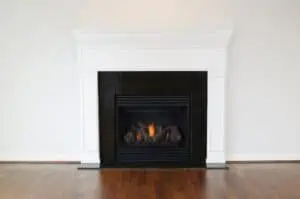How to Repair a Fireplace Flue?
As with any building, the chimney that vents your fireplace should be repaired regularly to ensure its safety and efficiency. This may include replacing a damaged flue liner or fixing cracks in the clay flue tiles.
(Looking for fireplace door repair? Contact us today!)

The Flue Tiles
Clay flue tiles are an important part of the chimney liner that keeps the heat and chemicals from entering your home when you burn wood, coal, or gas in your fireplace. When a chimney tile becomes cracked or broken, it can allow gases to seep into your home and pose an unsafe risk of fire.
It’s important to fix these problems before they become a fire hazard. If you have any cracks in the flue tiles, it is best to call a professional to perform a repair or replacement as soon as possible.
A Chimney Flue Lining
The flue lining of your chimney is made up of a section of clay flue tiles that are linked together by mortar. The mortar joints are vital for preventing moisture and other chemicals from getting into the flue. They also help keep the flue clean.
Occasionally, the mortar between flue tiles can deteriorate and become crumbly. This can leave gaps that allow the products of combustion to escape the chimney, causing carbon monoxide to enter the home and putting your family at risk.
Water can also damage your chimney’s mortar. Moisture mixed with creosote can eat away at the mortar and speed up its deterioration.
If you notice that the mortar between your chimney’s flue tiles is breaking, it’s time to make a repair. This can be a simple DIY project or it might be necessary for a professional to replace the entire flue lining.
A Cast-In-Place Method
There are a few different ways to replace the liner in your chimney, but one option that is becoming more popular is a cast-in-place recliner. This method involves removing the existing liner, cleaning out the flue, and then installing a new one. This is a labor-intensive process and it requires special equipment.
Stainless Steel Liners
Stainless steel is an affordable alternative to traditional masonry chimney liners. These liners are available in a variety of sizes and shapes, and they can be bent to fit any chimney.
A professional technician will take measurements of the chimney and then calculate the size of the liner that is needed for a safe operation. The new liner will be inserted in the existing flue and will have a tight seal with the old liner to ensure an efficient draft.
The new relined flue is typically back-buttered with chimney cement to seal it in place. It is then lowered into the chimney and allowed to dry for several days before it is ready to be used again.
Dampers & Levers
The damper in your chimney is a metal door located one to two feet above the fireplace opening. These dampers operate by using a lever that can be pushed down to open or pulled up to close the flue.

